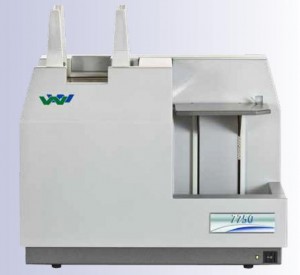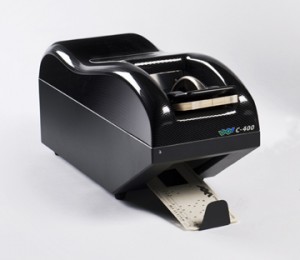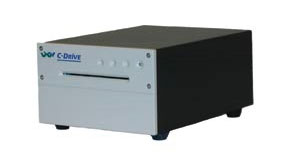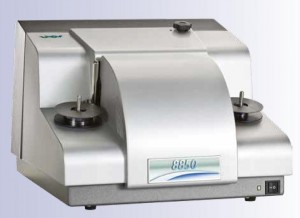Digital Scanning & Microfilm Equipment – DS & ME has a Total of TWENTY-NINE – 29 installations of the Wicks and Wilson – WWL Model C400 & the C DRIVE X plus the earlier model C250 Series 35 mm Aperture Card Scanner units for Engineering Drawing/s, Map/s & Plan/s.
Digital Scanning & Microfilm Equipment – DS & ME has installed the Wicks and Wilson – WWL 7700 Series Model 7750 fully Automatic Microfiche Scanner with the City of Casey located in Narre Warren – Melbourne – Victoria in 2018 plus a second Model 7750 fully Automatic Microfiche Scanner with the State Archives and Records Authority of New South Wales located in Kingswood in Western Sydney.
Wicks and Wilson – WWL 7700 Series Model 7750 fully Automatic Microfiche Scanner
The Wicks and Wilson – WWL 7700 Series Model 7750 fully Automatic Microfiche Scanner has now been updated to the High-volume: Mekel MACH 7 fully Automatic Loading Microfiche Scanner.
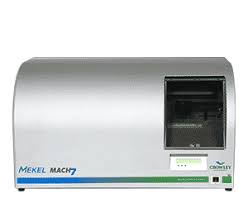
High-volume: Mekel MACH 7 Microfiche Scanner
Mekel MACH-Series Microfiche Scanner Product Video
Full details on the High-volume: Mekel MACH 7 fully Automatic Loading Microfiche Scanner are available online.
Digital Scanning & Microfilm Equipment – DS & ME has installed a Wicks and Wilson – WWL 8800 Series Model 8850 16 / 35 mm Roll Microfilm Scanner with Grace Information Management Solutions located in Perth – Western Australia in December 2020 plus an additional Model 8850 16 / 35 mm Roll Microfilm Scanner with Grace Information Management Solutions located in Melbourne – Victoria.
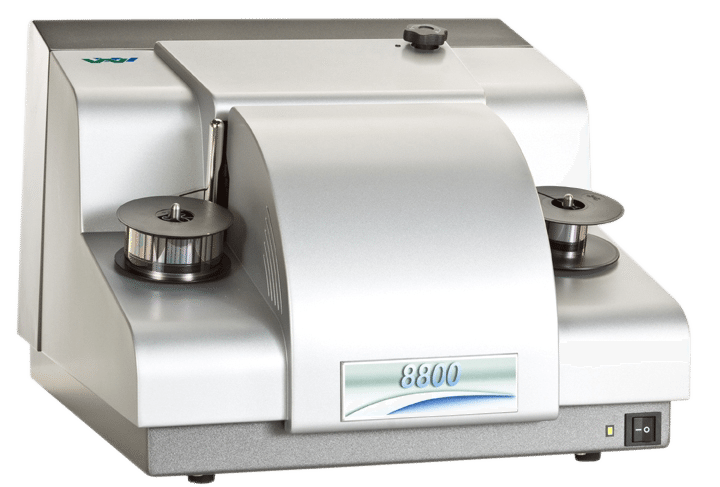
Wicks and Wilson – WWL 8800 SERIES 16-35mm Roll Microfilm Scanner
The Wicks and Wilson – WWL 8800 Series Model 8850 16 / 35 mm Roll Microfilm Scanner has now been updated to the High-volume: Mekel MACH 10 Microfilm Scanner with Media Flexibility and Superior Image Quality.
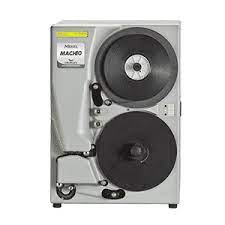
High-volume: Mekel MACH 10 Microfilm Scanner
Mekel MACH-Series Microfilm Scanner Product Video
Full details on the High-volume: Mekel MACH 10 Microfilm Scanner with Media Flexibility and Superior Image Quality are available online.
1. The Wicks and Wilson – WWL model C400 Aperture Card Scanner & the earlier model C250 AUTOMATED 35 mm APERTURE CARD FEED with a 150 – 35 mm Aperture Card Hopper for Engineering Drawings, Maps & Plans installed with Federal, State & Commercial Organisations plus Microfilm Scanning Bureau Organisations across the Australian – New Zealand – & Oceania Market Area
The Wicks and Wilson – WWL – C – Series model C400
2. The Wicks and Wilson – WWL C DRIVE X installed with the Federal Governments Department of Defence plus BlueScope Steel Limited.
The Wicks and Wilson – WWL – C – Series model C-DRIVE-X
Scroll down the page for full details on the Wicks and Wilson Limited – WWL NEW UPGRADED – FASTER with HIGHER SPEED & MORE POWERFUL – with IMPROVED CAPABILITIES model C400 with AUTOMATED 35 mm APERTURE CARD FEED with a 150 – 35 mm Aperture Card Hopper & the stand-alone C Drive X Desktop Series for single 35 mm Aperture Card operation 35 mm Aperture Card Scanner for Engineering Drawings, Maps & Plans.
On reviewing the information listed below related to this product you may find that you wish to request a Quotation for evaluation.
If you require a written quotation, then please Contact Us @ DS & ME should you require a Quotation & we will respond to your request at the earliest opportunity.
For full details on the Wicks and Wilson – WWL C Series of 35mm Aperture Card Scanners for Engineering Drawings, Maps & Plans you may care to view or download a copy of the C Series of 35 mm Aperture Card Scanners Brochure @ C400
For full details on the Wicks and Wilson – WWL 7700 Series – the models 7720 & the NEW FASTER & more featured model 7750 Microfiche ScanStations you may care to view or download a copy of the WWL 7700 Series Microfiche Scanner Brochure
The Wicks and Wilson – WWL 7700 Series
Designed to quickly and easily scan all types of fiche, from jackets @ 7 row x 14 frame fiche at 24 x reduction plus 5 row x 12 frame source document e.g. A 4 fiche at 24 x reduction ratio to Computer Output Microfilm – 15 row x 18 frame COM fiche at 48 x formats @ 24 x / 42 x & 48 x plus other non standard formats.
The GENUS IT MICROFILM SHOP of Nuneaton in the UK Crowley – Wicks & Wilson Ltd model 7750 Microfiche Scanner in action in their Microfiche Scanning Service Bureau
************
For full details on the Wicks and Wilson – WWL 8800 Series – the models 8820 & the NEW FASTER & more featured model 8850 – 16 / 35 mm Roll Film ScanStations you may care to view or download a copy of the WWL 8800 Series Brochure
The Wicks and Wilson – WWL 8800 Series
Convert either 16 mm or 35 mm roll film into easily accessed, digital data.
The GENUS IT MICROFILM SHOP of Nuneaton in the UK Crowley – Wicks & Wilson Ltd model 8850 16-35mm Roll Microfilm Scanner in action in their Microfiche Scanning Service Bureau
You can view below a YouTube Video showing The Wicks and Wilson model WWL 8850 – 35 mm roll film Scanner being put to effective use.
One computer expert working alone has built a historic newspaper site that’s orders of magnitude bigger and more popular than the one – created for the Library of Congress a federal bureaucracy with millions of dollars to spend.
Armed only with a few PCs and a cheap microfilm scanner, [ The Wicks and Wilson – WWL 8850 model 35 mm roll film Scanner ] Tom Tryniski has played David to the Library of Congress’ Goliath.
Tryniski’s site, Fultonhistory.com [ Now no longer available Online ] but now available online @ Amateur Beats Gov’t at Digitizing Newspapers: Tom Tryniski’s Weird, Wonderful Website which he created in his living room in upstate New York, has grown into one of the largest historic newspaper databases in the world, with 22 million newspaper pages.
By contrast, the Library of Congress’ historic newspaper site, Chronicling America, has 5 million newspaper pages on its site while costing taxpayers about $3 per page.
In January, visitors to Fultonhistory.com [ Now no longer available Online ] accessed just over 6 million pages while Chronicling America pulled fewer than 3 million views.
Fourteen years ago, Tryniski, a retired engineer, launched his website after a friend loaned him a collection of old postcards of Fulton, New York, the town where he’s lived all his life. He decided to scan and share them online with his neighbours.
Fulton fell on hard times in the mid-1970s, and Tryniski is nostalgic for the thriving factory town in which he grew up. He relishes in particular the small details of life in old Fulton—wedding announcements, obituaries, school events, society gossip—the sort of information that’s the bread and butter of local newspapers.
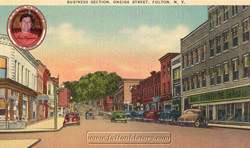
So after the postcards, he digitized the entire run of the Oswego Valley News, which is the paper of record for Fulton and its surrounding county.
It took about a year to finish scanning by hand the entire run of the paper, which began publishing in 1946.
Fultonhistory.com [ Now no longer available Online ] but now available online @ Amateur Beats Gov’t at Digitizing Newspapers: Tom Tryniski’s Weird, Wonderful Website really got going in 2003, when Tryniski, a high school graduate, bought a scanner that handles microfilm for $3,500 in a fire sale.
That meant he didn’t need access to the original newspaper copies, and he could work quickly because microfilm scanners are largely automated.
He installed a keyword recognition program, set up a network of PCs to do the heavy processing, and began uploading his scans to a server that’s located in a gazebo on his front deck.
He never bothered to change the original name of his website.
Tryniski pays all expenses for the site himself. The only significant costs are bandwidth, for which he pays $630 per month, and hard drives, which cost him about $200 per month.
He gets his microfilm at no cost from small libraries and historical societies.
In exchange, he gives them a copy of all the scanned images analysed for keyword recognition.
Most of the papers Tryniski has digitized are from
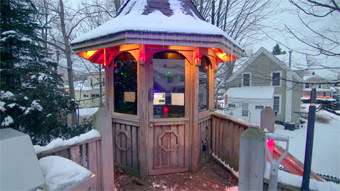
New York, but he’s rapidly expanding his coverage to other states as well.
He is adding updated content at a rate of about a quarter-million pages per month with no plans to slow down.
The biggest digital newspaper site on the Internet is the for-profit Newspaperarchive.com [ Now no longer available Online ] with 130 million pages. Newspapers.com [ Now no longer available Online ] a subsidiary of genealogy-titan Ancestry.com, has 34 million newspaper pages.
Both companies have approached Tryniski with partnership deals, but he turned them down in order to keep his site free.
“I think it’s just fascinating that technology has made it possible for a guy in a house with a server to create a pretty cool experience,” says Brian Hansen, the general manager of Ancestry’s Newspapers.com.
Chronicling America, the Library of Congress site, is financed by the National Endowment for the Humanities (NEH).
To date, the NEH has spent just over $22 million on the site.
A major reason for the sky-high price tag is that the NEH breaks up the money into tiny grants to individual libraries and historical societies, instead of simply paying the Library of Congress directly to complete the job.
So far, the NEH has awarded 72 grants worth about $300,000 each. Each award recipient is responsible for digitizing about 100,000 newspaper pages.
The majority of grant recipients hire a company called iArchives, Inc., a subsidiary of Ancestry.com, to do the actual scanning and analysis.
Hansen, who is also the general manager of iArchives, Inc., says if the Library of Congress hired his company to do the job in bulk, he could offer a better rate.
Asked for the rationale behind this byzantine system, a spokesperson for the NEH denied that breaking up the funding into small grants drives up costs, adding that the goal is partially to teach small libraries how to digitize newspapers in accordance with the Library of Congress’ “high technical” standards.
That way they’ll be able to take that knowledge and apply it to other projects.
But Hansen says the Library of Congress’ detailed specifications for analysing each newspaper page are of questionable value to users and a major reason his firm has to charge so much.
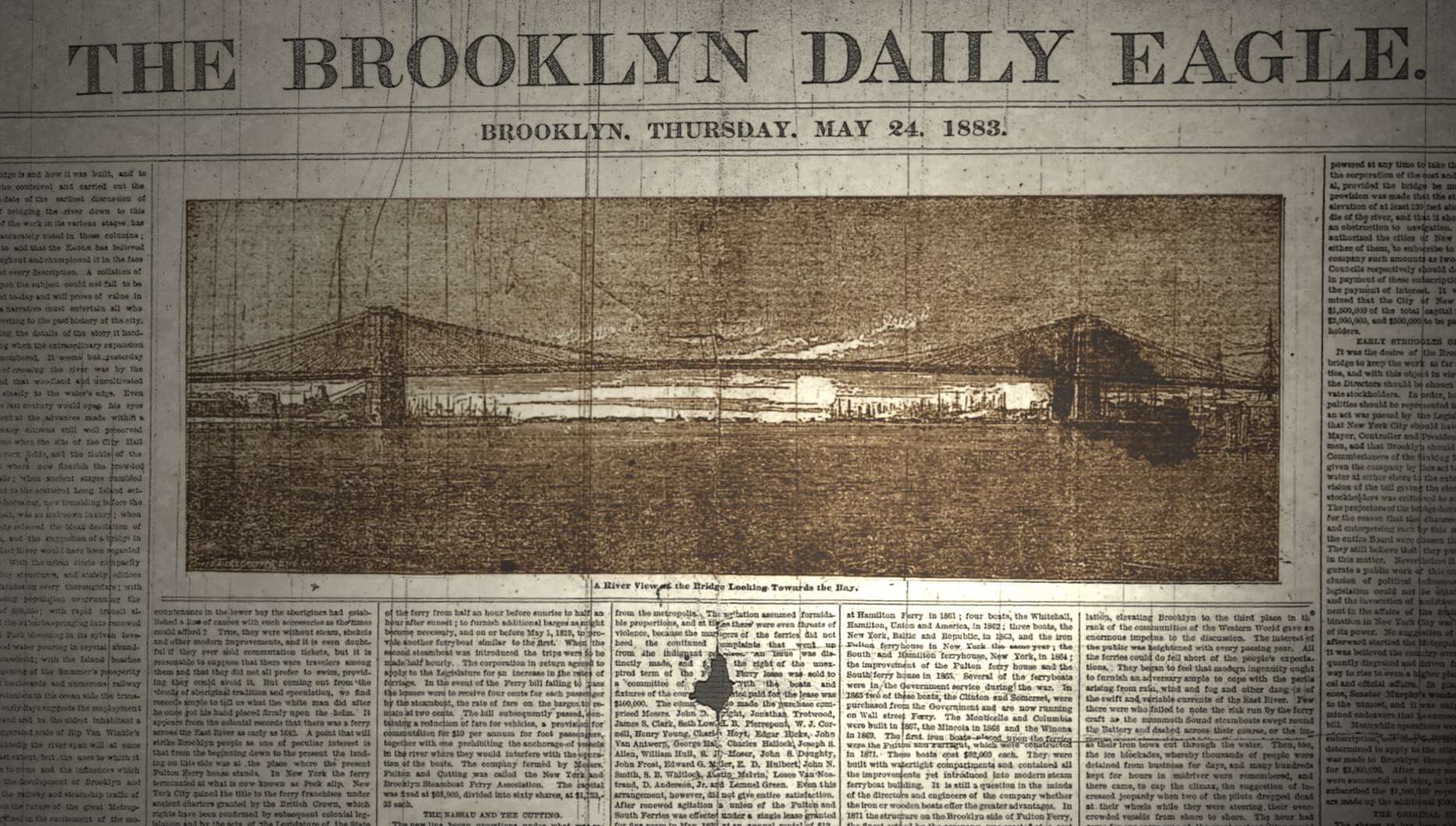
“Why not use the money for a lighter index to get more pages online?
It would be interesting to sit down with the Library of Congress and the NEH and have a conversation about what’s the best thing we can do for consumers,” says Hansen.
Even so, less than one-third of the funding goes to the actual scanning and indexing by firms like iArchives.
The NEH says the remaining money—more than $2 per newspaper page— goes for “identification and selection of the files to be digitized, metadata creation, cataloguing, reviewing files for quality control, and scholarship on the scope, content and significance on each digitized newspaper title, and in some cases specialized language expertise.”
Another competitor of Tryniski’s is the Brooklyn Public Library, which maintains a free online database of the Brooklyn Daily Eagle.
In its heyday as the paper of record for America’s third largest city, the Daily Eagle was among the most widely read and influential newspapers in the nation.
Poet Walt Whitman wrote more than eight hundred items for the paper and served as its editor from 1846 to 1848.
During the Civil War, the Daily Eagle had the largest circulation of any evening paper in the United States.
The Brooklyn Public Library spent two years and about $400,000 dollars digitizing just the first 62 years of the Daily Eagle‘s run, which comes to about 150,000 pages.
( A little more than half the funding was provided by a federal grant. )
That was back in 2003.
For the last decade, the library has been trying to raise money to finish the job.
In the meantime, Tom Tryniski digitized the entire 115-year run of the newspaper, which amounts to almost 750,000 pages.
In its January 2013 strategic plan, the Brooklyn Public Library promises that it will finish digitizing the Daily Eagle ( along with 63 Brooklyn community newspapers ) by 2015.
In an interview, Library Director Richard Reyes-Gavilan said the institution hasn’t raised any money yet towards that goal, but that it will be a major priority once other “monstrous projects” are out of the way.
Librarian Joy Holland, who oversees the Brooklyn Public Library’s Daily Eagle site, says she’s “immensely grateful” for what Tryniski has done, and directs researchers to the site all the time.
She also thinks the library’s site, while far more limited is scope, is “more suitable for use in educational environments.”

Image – Courtesy Tom Tryniski
The site has fewer keyword recognition errors than Fultonhistory.com [ Now no longer available Online ] , and for casual users, it’s easier to search.
Fultonhistory.com [ Now no longer available Online ] also has a bizarre interface that includes swimming fish and the occasional live video stream of squirrels eating corn on Tryniski’s front deck.
Perhaps the strangest detail is a moving graphic in the left-hand corner of the screen that shows Tryniski’s head grafted on top of the body of a spider.
Tryniski, who has never altered the site’s original graphic design, says he’s emphasizing content over style.
“I could spend all my time on the interface, or I could spend my time on the digitization and data processing,” says Tryniski.
“Once you hit the search button the interface disappears, and you get to see the newspapers.”
Tryniski’s had discussions with the New York State Library to donate his archive eventually, but talks have stalled.
He gets emails all the time from users sharing discoveries they’ve made on his site and thanking him for making it all possible.
“I just get a lot of satisfaction helping people find information,” says Tryniski.
“It’s just really nice looking back in time and reading about what was going on.”
Video written, produced, shot, and edited by Jim Epstein, who also narrates.
Approximately 5 minutes.
Scroll down for downloadable versions and subscribe to Reason TV’s YouTube Channel to receive automatic updates when new material goes live.
About 2 million pages that the NEH has awarded grants for haven’t yet made it online, so the $3 per page estimate was arrived at by dividing $22 million ( total grant funding as of 2012 ) by 7,271,000 pages ( total paid for by grants as of 2012 ).
2011-APRIL:
Digital Scanning & Microfilm Equipment – DS & ME is pleased to be able to announce the release of the Wicks and Wilson Limited – WWL NEW UPGRADED – FASTER with HIGHER SPEED & MORE POWERFUL – with IMPROVED CAPABILITIES C400 with AUTOMATED 35 mm APERTURE CARD FEED & Drive X Series for single 35 mm aperture card scanning 35 mm Aperture Card Scanners for Engineering Drawings, Maps & Plans.
The Wicks and Wilson Limited – WWL C400 with AUTOMATED 35 mm APERTURE CARD FEED & THE DRIVE x Series units for Engineering Drawings, Maps & Plans are designed to replace the outgoing C250 models. At the same time, an updated version of the C Drive X for single 35 mm aperture card operation will be released and the C-Drive internal scanner will cease production.
The C400 Series is a range of compact scanners for the digitisation of 35 mm microfilm aperture cards. Once scanned, the data can be accessed instantly for viewing, printing, email, distribution, or storage.
The C400 features an automatic feed system that can scan batches of 150 – 35 mm Aperture Cards for Engineering Drawings, Maps & Plans unattended.
Advanced image enhancement and editing tools are included as standard in the Windows 7 compatible software. For full details on the Wicks and Wilson Limited – WWL C400 Series of 35 mm Aperture Card Scanners for Engineering Drawings, Maps & Plans you may care to view or download a copy of the C400 Series of 35 mm Aperture Card Scanners Brochure @ Wicks and Wilson Limited – C400 Series of 35 mm Aperture Card Scanners
New features and updates summary:
The NEW UPGRADED Wicks and Wilson Limited – WWL C400 Series offers the following updates and new features compared to the outgoing C250 Series
Fully compatible with Windows 7, supporting both 32-bit and 64-bit versions of Microsoft’s latest operating systems has been provided.
Increased throughput; now 300 – 35 mm Aperture Cards per hour at 400 DPI, up from 250 – 35 mm Aperture Cards per hour for the C250. This has been achieved by reconfiguration and optimisation of the scanning process and is most noticeable when scanning larger drawings at higher resolutions.
Dual save functionality, allowing greyscale and bi-tonal image files to be created from a single scan.
The bi-tonal image, with its smaller file size, is ideal for printing and email distribution whilst the greyscale file provides the detail sometimes required for poorer quality 35 mm aperture cards or can be saved as an archival copy, available for reference when necessary.
Auto-white balance ( AWB ) imaging tool analyses the scanned image and then automatically selects the optimal brightness and contrast settings to generate a high-quality greyscale image with a light background and strong, dark data.
The imaging algorithms used to process the scan data have been improved so that images are processed faster. This is most noticeable when scanning larger drawings at higher resolutions.
Simplified installation and set-up with digitally signed Windows drivers.
USB dongle protection.
All this and no price increase over the Wicks and Wilson Limited – WWL C250!
For 30 years, Wicks and Wilson Limited – WWL has specialised in producing high quality microfilm scanning related products.
Wicks and Wilson Limited – WWL have taken a giant leap forward with the recent release of their new low entry point 35 mm Aperture Card Scanners the C Series first displayed and demonstrated at the recent ARMA 2006 – San Antonio, Texas Conference/Exhibition held in October 2006.
Wicks and Wilson Limited – WWL had on display every version of their Scanner product range which included the newly released C Series of 35 mm Aperture Card Scanners.
The C Series of 35 mm Aperture Card Scanner consists of:
1. The entry point model unit in the C Series of 35 mm Aperture Card Scanner is the model C Drive X which is the PC version mounted in a case for remote connection to a PC via a Hi-Speed USB – plug & play connectivity, which is simple, effective & reduces set-up time.
2. The top of the range model of the C Series of 35 mm Aperture Card Scanner is the model Wicks and Wilson Limited – WWL Model C400 AUTOMATED 35 mm APERTURE CARD FEED with a 150 – 35 mm Aperture Card Hopper 35 mm Aperture Card microfilm scanning solution multi feed unit with the ability to scan up to the rate of 350 images per hour at 200 DPI of A 2 size DIN drawings filmed onto 35 mm roll microfilm mounted onto 35 mm Aperture Cards.
All of the C Series of 35 mm Aperture Card Scanners are small in physical size but big in throughput capability, ease of use & quality of image output.
The Wicks and Wilson Model C400 AUTOMATED 35 mm APERTURE CARD FEED Scanner with a 150 – 35 mm Aperture Card Hopper Integrated 35 mm Aperture Card Microfilm Scanning Solution.
Your Engineering Drawing Archive is a treasure that can be further leveraged if you can take advantage of the Wicks and Wilson Limited – WWL C400 AUTOMATED 35 mm APERTURE CARD FEED Scanner with a 150 – 35 mm Aperture Card Hopper.
The Wicks and Wilson Limited – WWL C400 – 35 mm Aperture Card microfilm scanning solutions ability to scan your 35 mm Aperture Card holding so that they can be stored in a digital format ready for internal or external distribution via a local or wide area network or emailed across the building, city, state or across the world or printed directly from the scanner, all with minimal operator intervention.
That’s the time-saving way to treasure your archive with assistance from the installation of the Wicks and Wilson Limited – WWL C400 AUTOMATED 35 mm APERTURE CARD FEED with a 150 – 35 mm Aperture Card Hopper Microfilm 35 mm Aperture Card Scanner.
The Wicks and Wilson Limited – WWL C400 AUTOMATED 35 mm APERTURE CARD FEED with a 150 – 35 mm Aperture Card Hopper 35 mm Aperture Card microfilm scanning solution is the quick, effortless way to integrate your legacy 35 mm Aperture Cards into today’s digital document workflow.
Simplifying the whole digital scanning process, the Wicks and Wilson Limited – WWL Model C400 AUTOMATED 35 mm APERTURE CARD FEED with a 150 – 35 mm Aperture Card Hopper 35 mm Aperture Card microfilm scanning solution brings the highest level of automation to 35 mm aperture card microfilm scanning.
Batches of up to 350 – 35 mm Aperture Cards can be scanned automatically per hour.
After digital scanning, they can be stored in digital form or printed directly from the scanner, all with minimal operator intervention.
Batch processing and printer integration from 35 mm Aperture Card/s to your digital engineering drawing archive Quality, flexibility and ease of use Auto clean-up Integrated intelligent Hollerith Punch Reader Productive microfilm scanning with the Wicks and Wilson Limited – WWL Model C400 AUTOMATED 35 mm APERTURE CARD FEED with a 150 – 35 mm Aperture Card Hopper 35 mm Aperture Card microfilm scanning solution.
Increase productivity with the Wicks and Wilson Limited – WWL Model C400 AUTOMATED 35 mm APERTURE CARD FEED with a 150 – 35 mm Aperture Card Hopper 35 mm Aperture Card microfilm scanning solution.
The Wicks and Wilson Limited – WWL Model C400 AUTOMATED 35 mm APERTURE CARD FEED with a 150 – 35 mm Aperture Card Hopper 35 mm Aperture Card microfilm scanning solution provides fast, easy, microfilm scanning and quality digital conversion.
With batch processing, digital conversion and printer integration, digital scanning with the Wicks and Wilson Limited – WWL C400 AUTOMATED 35 mm APERTURE CARD FEED with a 150 – 35 mm Aperture Card Hopper 35 mm Aperture Card microfilm scanning solution improves employee efficiency and productivity.
Batch Processing:
Feed input and batch processing enables employees to place into the input feed hopper and just walk away & let the Wicks and Wilson Limited – WWL C400 AUTOMATED 35 mm APERTURE CARD FEED with a 150 – 35 mm Aperture Card Hopper 35 mm Aperture Card microfilm scanner weave its magic.
The 35 mm Aperture Card/s are scanned, digitised, and stored or printed quickly with minimal employee intervention. Microfilm scanning with the Wicks and Wilson Limited – WWL Model C400 AUTOMATED 35 mm APERTURE CARD FEED with a 150 – 35 mm Aperture Card Hopper 35 mm Aperture Card microfilm scanning solution to convert legacy 35 mm Aperture Cards into digitally stored images streamlines the access, retrieval, and management of technical documents.
The Crowley – Wicks & Wilson Limited – WWL Model C400 AUTOMATED 35 mm APERTURE CARD FEED with a 150 – 35 mm Aperture Card Hopper 35 mm Aperture Card microfilm scanning solution ensures 35 mm Aperture Cards are efficiently scanned and converted to secure digital images.
35 mm Aperture Card/s scanned to a digital engineering drawing archive:
Using the Wicks and Wilson Limited – WWL Model C400 AUTOMATED 35 mm APERTURE CARD FEED with a 150 – 35 mm Aperture Card Hopper 35 mm Aperture Card microfilm scanning solution to convert legacy 35 mm Aperture Cards into digitally stored images streamlines the access, retrieval, and management of stored technical documents.
No more waiting for drawings. No more lengthy searches for misfiled or lost 35 mm Aperture Cards.
No more errors generated from inferior quality 35 mm aperture card scans.
The Crowley – Wicks & Wilson Limited – WWL Model C400 AUTOMATED 35 mm APERTURE CARD FEED with a 150 – 35 mm Aperture Card Hopper 35 mm Aperture Card microfilm scanning solution ensures that 35 mm aperture cards are efficiently scanned and converted to digital images.
The images can be printed, stored on your file system, or in a digital engineering drawing archive.
Since employees won’t have to spend extensive time on the problems related to 35 mm Aperture Card storage and retrieval, they can focus more of their efforts on revenue generating activities.
Information Technology – IT / Network Administration:
The Crowley – Wicks and Wilson Limited – WWL Model C400 AUTOMATED 35 mm APERTURE CARD FEED with a 150 – 35 mm Aperture Card Hopper 35 mm Aperture Card microfilm scanning solution provides a 35 mm Aperture Card scanner that’s easy to integrate into any network environment.
Integration into a CAD environment:
The Crowley – Wicks and Wilson Limited – WWL Model C400 AUTOMATED 35 mm APERTURE CARD FEED with a 150 – 35 mm Aperture Card Hopper 35 mm Aperture Card microfilm scanning solution provides a 35 mm aperture card scanner that supports elevated levels of quality in supporting a design process environment.
Printer integration:
A unique Crowley – Wicks and Wilson Limited – WWL Model C400 AUTOMATED 35 mm APERTURE CARD FEED with a 150 – 35 mm Aperture Card Hopper 35 mm Aperture Card microfilm scanning solution feature, Digital Microfilm Printing ( DMP ) includes the ability to integrate the Wicks and Wilson Limited – WWL Model C400 AUTOMATED 35 mm APERTURE CARD FEED with a 150 – 35 mm Aperture Card Hopper with any Microsoft Windows Compatible printers.
Print files are sent directly from the scanner to increase output efficiency.
With the use of any Microsoft Windows Compatible printer e.g., any printer with the capability to print from A 4 = 210 x 297 mm in size up to A 0 = 841 × 1189 mm paper size professional production printers, the client is guaranteed optimal quality and reliability.
While the Wicks and Wilson Limited – WWL Model C400 AUTOMATED 35 mm APERTURE CARD FEED with a 150 – 35 mm Aperture Card Hopper 35 mm Aperture Card microfilm scanning solution is scanning 35 mm Aperture Cards, the printer can process and print simultaneously thus ensuring that output is produced quickly without the need to stop the scanning process.
Quality, flexibility, and ease of use:
The Wicks and Wilson Limited – WWL Model C400 AUTOMATED 35 mm APERTURE CARD FEED with a 150 – 35 mm Aperture Card Hopper 35 mm Aperture Card microfilm scanning solution enables the creation of quality digital images while offering incredible flexibility and ease of use through job mode options, Hollerith functionality, and log file generation.
Quality:
Microfilm scanning occurs at high resolutions of up to 400 dots per inch – DPI regardless of image size.
The Wicks and Wilson Model C400 AUTOMATED 35 mm APERTURE CARD FEED with a 150 -35 mm Aperture Card Hopper 35 mm Aperture Card microfilm scanning solutions, Image Logic technology processes the scanned image, automatically addresses optical non-uniformities, zooms, and frames images into the chosen resolution and appropriate magnification, and automatically cleans up the images through a variety of error diffusion techniques.
The Wicks and Wilson Limited – WWL Model C400 AUTOMATED 35 mm APERTURE CARD FEED with a 150 – 35 mm Aperture Card Hopper 35 mm Aperture Card microfilm scanning solution ensures that crisp clean images with faithful image reproduction are consistently created with the use of the following advanced imaging processes:
Background compensation with line-for-line measurements ensures consistent clean backgrounds and quality output even with mixed batches.
Dividing scanned images into 256 grey levels—not simply black and white, improves definition.
Special filtering softens shaded areas, enhances fine lines and weak images.
Error diffusion techniques deliver even gray levels and maintain the maximum number of pixels required for thin line printing.
Auto clean-up:
The Wicks and Wilson Limited – WWL Model C400 AUTOMATED 35 mm APERTURE CARD FEED with a 150 – 35 mm Aperture Card Hopper 35 mm Aperture Card microfilm scanning solution offers incredible flexibility and accuracy in digital conversion of high and low-quality microfilm originals.
The operation mode can be selected to optimise the image quality based on the types of 35 mm Aperture Cards being processed. Excellent quality 35 mm Aperture Card/s need less image processing and easily can be processed in the high-speed mode for maximum productivity.
Poor resolution 35 mm Aperture Cards require the optimum quality mode.
This can rejuvenate images from old, low contrast microfilms.
Choosing this mode for batch processing applications involving aperture cards of different quality to ensure consistent, high-quality results and improved efficiency, and avoids re-scanning.
Integrated Hollerith Punch Reader:
Working with 35 mm Aperture Cards from a variety of sources can be difficult to manage.
If the 35 mm Aperture Cards are punched with Hollerith punched index data, the Wicks and Wilson – WWL Model C400 AUTOMATED 35 mm APERTURE CARD FEED with a 150 – 35 mm Aperture Card Hopper 35 mm Aperture Card microfilm scanning solution can read this information and automatically set itself up for scanning that particular 35 mm Aperture Card.
No operator intervention is required for various 35 mm Aperture Card types in a batch e.g. reductions, or different indexing methods are not an issue as the Integrated Hollerith Punch Reader performs intellectual identification aspect of this task automatically.
Log file generation:
The Wicks and Wilson – WWL Model C400 AUTOMATED 35 mm APERTURE CARD FEED with a 150 – 35 mm Aperture Card Hopper 35 mm Aperture Card microfilm scanning solution offers flexibility with quality checks and status review to simplify job administration.
During automatic scan-to-file processing of 35 mm Aperture Card batches, you can periodically check quality after each preset number of scans.
If you wish to run continuous processing, the Wicks and Wilson Model C400 AUTOMATED 35 mm APERTURE CARD FEED with a 150 – 35 mm Aperture Card Hopper 35 mm Aperture Card microfilm scanning solution creates a log file of image, identification, and data compiled for each 35 mm Aperture Card.
This can be helpful when reviewing the status of digital conversion or cost allocating for scanning and printing. 35 mm Aperture Cards rejected for damage or illegibility are automatically registered in a reject file for maximum production efficiency, improving reliability, prevent production holdups, and maintain orderly inventory files.
Flexibility:
The Wicks and Wilson – WWL Model C400 AUTOMATED 35 mm APERTURE CARD FEED with a 150 – 35 mm Aperture Card Hopper 35 mm Aperture Card microfilm scanning solution offers additional features to ensure customers process 35 mm Aperture Cards effectively for their environment.
With the Wicks and Wilson – WWL Model C400 AUTOMATED 35 mm APERTURE CARD FEED with a 150 – 35 mm Aperture Card Hopper 35 mm Aperture Card microfilm scanning solution, you have the option to rotate images from portrait to landscape as well as integrate third party software to control and set up imaging, drawing size and file name parameters.
Further, with the addition of optional software, the Wicks and Wilson – WWL Model C400 AUTOMATED 35 mm APERTURE CARD FEED with a 150 -35 mm Aperture Card Hopper 35 mm Aperture Card microfilm scanning solution can be integrated with an archival repository or Digital Microfilm Printing ( DMP ) system. Central Reproduction Department – CRD requirements:
All Central Reproduction Department – CRD’s require an easy-to-use, productive 35 mm Aperture Card Scanner that fully integrates with my printers and digital engineering drawing archive.
The Wicks and Wilson – WWL Model C400 AUTOMATED 35 mm APERTURE CARD FEED with a 150 – 35 mm Aperture Card Hopper 35 mm Aperture Card microfilm scanning solution is the answer to Central Reproduction Department – CRD’s prayer.
Wicks and Wilson Limited – WWL Model C400 AUTOMATED 35 mm APERTURE CARD FEED with a 150 – 35 mm Aperture Card Hopper:
This unit is a production version of the C Series 35 mm Aperture Card Scanner with a 35 mm Aperture Card feed hopper, 35 mm Aperture Cards Hollerith read ability and the scanning of 35 mm Aperture Cards at up to 370 – 35 mm Aperture Cards per hour scan speed.
The Wicks and Wilson – WWL Model C Drive X: This unit is a standalone desk top SINGLE 35 mm APERTURE CARD VERSION of the C400 Drive 35 mm Aperture Card Scanner.
Smaller than a shoe box, this unit allows you to scan 35 mm Aperture Cards on demand.
The unit automatically:
1. Accepts the 35 mm Aperture Cards.
2. Scans the 35 mm Aperture Cards and.
3. Returns the 35 mm Aperture Cards to you.
The Crowley – Wicks & Wilson Limited – WWL Model CS500 and CS750 – 35 mm Aperture Card ScanStations @ CS750 – 35 mm Aperture Card ScanStations convert 35 mm aperture cards into digital data, allowing CAD files to be accessed and printed instantly.
Australian Installations of the Crowley – Wicks & Wilson Limited – WWL 35 mm Aperture Card Scanners
Australian Imaging & Microfilm Services – AMS – now Grace Information Management
AVANTIX was previously Scan Conversion Services Pty Ltd – SCS
The Centre of Maritime Engineering – CME
COMPU-STOR IFORMATION MANAGEMENT SOLUTIONS
The Department of Defence – RAAF – Maribyrnong
The Department of Defence – Penrith
The Gladstone Alumina Refinery – Queensland Alumina Limited – QAL
GRACE INFORMATION & RECORDS MANAGEMENT – Forrestfield – WA
Iron Mountain Australia: Records and Data Management – Port Melbourne – VIC
Scan Conversion Services Pty Ltd – SCS – Adelaide Metropolitan Area – SA
Synergy WA previously Verve Energy Inc. Western Australia
Technological micro Data ( Aust ) – TMD
Thales Australia – Air Traffic Management
Victorian installation – Client details withheld on request – Melbourne VIC
The Water Corporation of Western Australia – John Tonkin Water Centre TWO-2 C400’s
Western Power, a Western Australian State Government Owned Corporation – Perth
Xstrata Copper – Mount Isa Mines Australia – Mount Isa – QLD
For any form of 16 / 35 mm Roll Microfilm, Microfiche, 35 mm Aperture Card/s for Engineering, Architectural plus other types of Drawing/s, Map/s & Plan/s – either negative or positive, plus Micro Opaque/s – e.g. Microcard/s or Microprint/s, Micrographic & Microform requirements, no matter how small or complex, please contact us via the Contact Us @ DS & ME facility at this website or email Laurie Varendorff of Digital Scanning Equipment & Microfilm Equipment – DS & ME via Email @ Laurie.Varendorff@gmail.com & we will do everything in our power to fulfil your requirements.
For any book, archival document or fragile material project which requires Scanning, Digitising = Digitizing, & or Imaging, no matter how small or large then contact Laurie Varendorff via email @ Laurie.Varendorff@gmail.com ; or Phone: Australia @ 0417 094 147 – International @ +61 417 094 147 at Digital Scanning & Microfilm Equipment – DS & ME.
Laurie will be able to advise if DS & ME has the specialised equipment available for the Scanning, Digitising, & or Imaging from a minimum size of A 6 = 148 mm in width by 105 mm in height up to a maximum size of over Double A 0 = 1189 mm plus in width by 841 mm plus in height for books or Fragile Document/s, Map/s, Plan/s or Engineering, Architectural plus other types of Drawing/s required to meet a prospective client’s individual requirements.
For any form of Scanning of Books up to A0 in size or Large Format Fragile Documents up to Double A0 in size plus microfilm aperture card, jacket, microfiche, microfilm – 16 / 35 mm Roll, micrographic & microform requirements, no matter how small or complex, please contact us via the Contact Us @ DS & ME facility at this website or email Laurie Varendorff at – Digital Scanning & Microfilm Equipment – DS & ME – Email: Laurie.Varendorff@gmail.com & we will do everything in our power to fulfil your requirements.
For any book, drawing, map or plan plus archival document or fragile material no matter the size – e.g. less than A 5 = 148 x 210 mm = ( 5.83 x 8.27 inches ) or up to Double A 0 Plus = 2,000 x 1,210 mm = ( 78.7 x 47.64 inches ) – which requires Scanning, Digitising = Digitizing & or Imaging for your Digitisation Projects, no matter how large or small then contact Laurie Varendorff @ email @ Laurie.Varendorff@gmail.com ; or Phone: Australia @ 0417 094 147 – International @ +61 417 094 147 at Digital Scanning & Microfilm Equipment – DS & ME.
Laurie will be able to advise if DS & ME has the specialised equipment available for the Scanning, Digitising, & or Imaging from a minimum size of A 6 = 148 mm in width by 105 mm in height up to a maximum size of over Double A 0 = 1189 mm plus in width by 841 mm plus in height for books or Fragile Document/s, Map/s, Plan/s or Engineering, Architectural plus other types of Drawing/s required to meet a prospective client’s individual requirements.
For Further Assistance? If you require details on the range of Digital Microfilm Reader – Viewer – Scanner – Printers available in the Australian – New Zealand – & Oceania Region or any of DS & ME’s extensive range of Microfilm or Book & Large Format Fragile Document Scanners on any the products or services listed on this website or require a quotation you can send an e-mail, or phone Laurie Varendorff via email @ Laurie.Varendorff@gmail.com ; or Phone: Australia @ 0417 094 147 – International @ +61 417 094 147
Digital Scanning & Microfilm Equipment – DS & ME for All Things Micrographic plus Book & fragile Archival Document Scanning, Digitising & Imaging services the Australian – New Zealand – Papua New Guinea & Oceania Market which includes all states & territories of Australia including Western Australia, South Australia, Victoria, Tasmania, New South Wales, the Australian Capital Territory, Queensland, the Northern Territory plus New Zealand – NZ plus surrounding areas in Oceania where our Business Partners provide us with the authority to promote, install & to provide ongoing technical support for their nominated equipment range.

